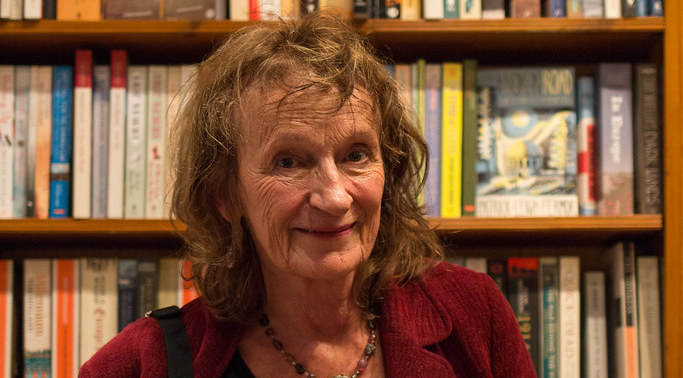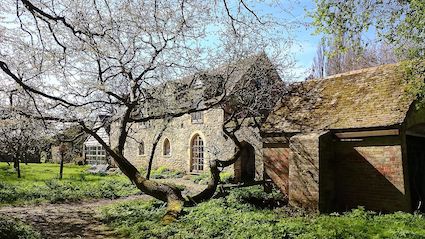For a long time she was mainly known as the eccentric aristocrat who drilled a hole in her own head — willingly!
We are of course talking about the iconic Amanda Feilding (or the Countess of Wemyss and March if you’re fancy!)

Psychedelic Icon: Amanda Feilding
Amanda Feilding was born on April 5, 1943, in Oxford, England. Her father, Basil Feilding, was the great-grandson of the 7th Earl of Denbigh and the Marquess of Bath. Feilding grew up in a large country house in the Oxfordshire countryside, surrounded by a large family and a menagerie of animals.
An Early Fascination with Mysticism
From early on, Feilding had an intense curiosity about mysticism, and dedicated much of her time to its study. At age 16 her parents allowed her to drop out of school to find her godfather (that she had never met) — a man called Bertie Moore. During the war he had been a spy catcher, but now was living as a Buddhist monk in Sri Lanka, so she believed he could educate her on the spirituality she desired. However, during her journey — passport-less — she became stranded at an airport. A group of Bedouins came to her rescue, and soon she found herself travelling around the Middle East with them in a Cadillac. Only months later, she would be studying under the religious scholar Robert Charles Zaehner in Oxford.
Not long after this, age 22, she had her first LSD experience — which was also, very nearly, her last. Her coffee was spiked with a huge dose of the psychedelic, which caused, in Fielding’s words a ‘psychic wound’. This took her 3 months to recover from. However, this experience did pique Feilding’s interest in what LSD and other psychedelics could do, when used properly.
The Countess with a Hole in Her Head
A couple of years later she met and fell in love with Dutch natural scientist Bart Hughes. Together they experimented with LSD and explored consciousness. Feiling told Wired in 2015;
“I thought that LSD had the power to change the world… That was our work, understanding the ego and the deficiencies of humans and how one might heal and treat them with altered states of consciousness.”

Psychedelics were not the only thing they explored however. They also explored the ancient technique of trepanation. Yep, this is the drilling-hole-in-head part of Feilding’s story. Trepanation has been done for centuries for various reasons — to reduce pressure on the brain, to let out evil spirits, to connect with a higher power, etc. Feilding was motivated by the belief that relieving the pressure of her skull would increase the flow of blood to her brain, thus achieving a permanently heightened state of consciousness. Feilding filmed herself using a dentist drill to bore a small hole in her forehead in 1970, while on LSD. Afterwards, she wrapped a colorful scarf round the wound, and continued on to a party. Later she would have it enlarged by a surgeon in Mexico.
Psst — we probably don’t need to say it — but don’t try this at home folks! (There is currently no medical support for trepanning, and also — ouchie!)
Establishing The Beckley Foundation

Although this made Feilding infamous in many circles, it’s not so bad to be an outcast if you live in a castle, like she did. It also ables you to be free in the causes you wish to advocate for. Fielding’s wealth and outsider status meant she could advocate for the psychedelic cause without the threat of losing her standing in an institution, unlike many scientists and researchers. Especially during a time when psychedelics — from LSD, to psilocybin, to DMT — names were mud. However, as a woman, and without formal training, she often found herself underestimated and overlooked.
In 1998, Feilding set up the Beckley Foundation. A pioneering non-profit organization dedicated to promoting and supporting research into the potential benefits of psychoactive substances, such as cannabis, MDMA, psilocybin and LSD. The late, great, Albert Hoffman — synthesizer of LSD — was president of the foundation until his death in 2008, aged 102.
Researching the Therapeutic Potential of Psychedelics
The foundation’s primary aim is to explore the therapeutic potential of these substances, particularly in the treatment of mental health conditions such as depression, anxiety, and addiction. Feilding herself credits LSD with helping her to quit smoking 50 years ago. To this end, the foundation supports a range of scientific research projects, clinical trials, and public education initiatives.

One of the foundation’s most notable projects is the Beckley/Imperial Research Programme, which is a collaboration with Imperial College London that seeks to explore the effects of psychedelic substances on the brain and their potential therapeutic applications. This research has yielded promising results, including the finding that psilocybin may be effective in treating treatment-resistant depression and anxiety.
“It is Time For a New Approach”
The Beckley Foundation has also been involved in a number of advocacy and policy initiatives related to drug policy reform. For example, the foundation played a key role in the establishment of the Global Commission on Drug Policy, which is an international organization that advocates for evidence-based drug policies and the decriminalization of drug use. In 2016, Feilding addressed the United Nations General Assembly after the publication of an open letter published in The Guardian and The Times newspapers entitled “The global war on drugs has failed. It is time for a new approach.” This letter included the signatures of world leaders dignitaries including Noam Chomsky, Archbishop Desmond Tutu, and Sir Richard Branson.
The World is Catching Up
Today, having just turned 80, the psychedelic Countess has no plans to slow down. She is aware that the powers-that-be are finally starting to see what she, herself, has been able to see for many years. As she told You Magazine in 2021;
“It’s a surprise to find myself a respected figure, because I certainly haven’t been [in the past]…Of course, I’ve been exactly the same figure all along, it’s just that society’s attitudes have changed.”






